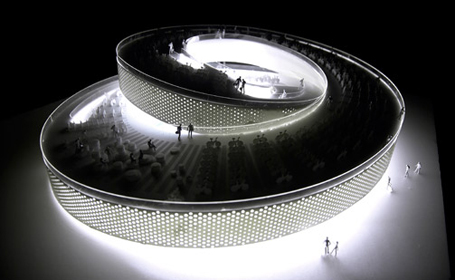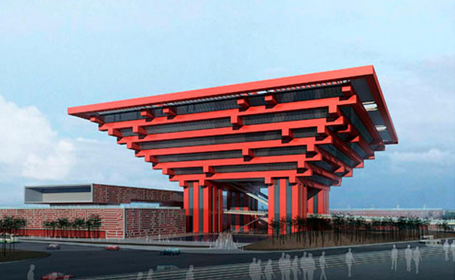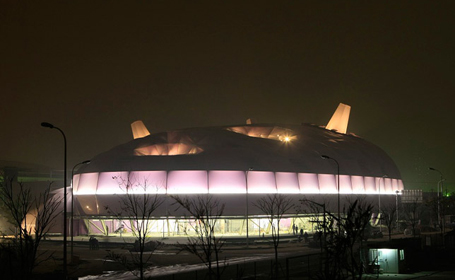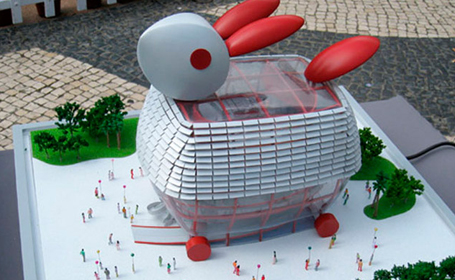Here, we show some of the most arresting pavilions for the forthcoming Expo, whose theme this year is: 'Better City, Better Life.'
The Danish Pavilion: 'Wellfairytale' by Big architects

The Danish have decided to move their Little Mermaid statue, along with a supertanker full of water from the harbour, to Shanghai. 'It is more efficient to move the Little Mermaid to China than to move 1.3b Chinese to Copenhagen,' remarked BIG architects and the 2+1 Ideas Agency. The statue will sit at the base of a swirling velodrome, where 1,500 Danish bicycles will carry visitors through the exhibits. Meanwhile, Chinese artist Ai Weiwei will design a temporary sculpture to fill the space left by the mermaid.
The Chinese Pavilion: 'Oriental Crown' by He Jingtang

The Chinese pavilion is the biggest, tallest and most expensive building on the Expo site. Built from interlaced red beams locked together with traditional Chinese dougong brackets, the inverted ziggurat is visible from miles around. But then, having spent almost £40bn on the Expo (roughly twice the budget of the Beijing Olympics), the Chinese were determined to make an impressive pavilion. Visitors will get a 40-minute tour that will include a trip in a cable car. A vision of China's future low-carbon cities is also promised.
The Japanese Pavilion: 'Purple Silkworm' by Yutaka Hikosaka

Also known as Purple Silkworm Island, this is the biggest and most expensive pavilion that Japan has built for a World Expo. The cocoon-shaped pavilion is made from the world's first 'pillow membrane', built from amorphous solar cells. Collected rainwater will be sprayed over the membrane to keep it cool as it powers the displays. Once inside, visitors can tread on electricity-generating floorboards, test-drive Toyota's one-person transport pod, and listen to violin-playing robots. Canon is also set to unveil its new 3D camera.
The Macau Pavilion: 'Rabbit Lantern' by Carlos Marreiros

No, it's not a bunny girl from one of Macau's swankiest casinos, but a giant silver rabbit lantern, the kind Macau-born architect Carlos Marreiros remembers playing with as a child. The mega-structure is a glass case lit by colour-shifting LED lights powered by solar panels, while its head and tail are detachable balloons. Marreiros says it can be recycled when its six months are up. The 19.99m-tall rabbit marks the year (1999) when the former Portuguese colony was handed back to China. Visitors will find it sitting just a bunny hop away from the Chinese pavilion.
The article is republished with permission from Wallpaper.com
